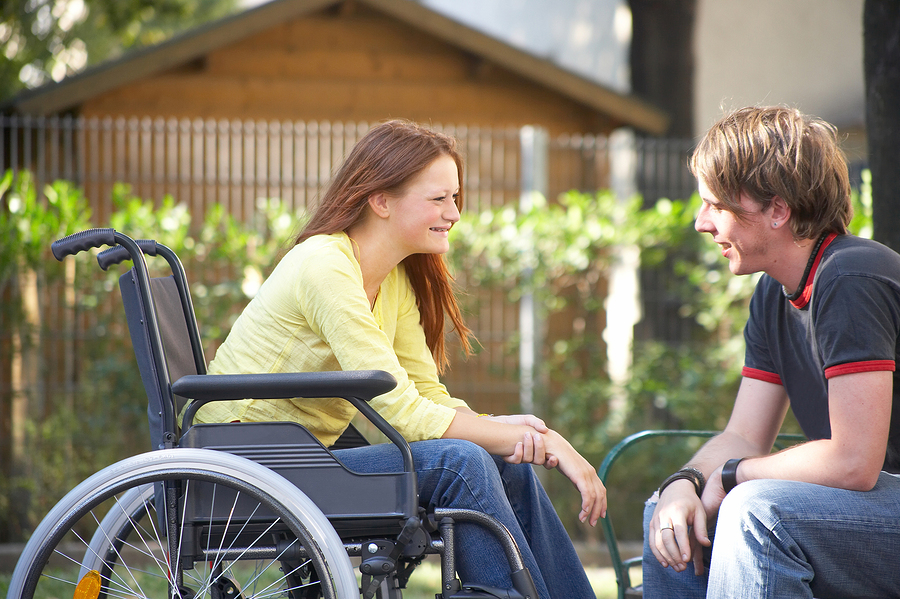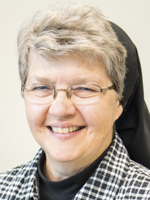
Mary Jane and Craig were college students who left a decades-long impression on me. As a young teen, she had thought herself indestructible and fell from the far-too-tall tree she had climbed on a dare. She navigated the campus in a wheelchair, as did he. His was the result of having been born with no arms and stumps for legs.
Mary Jane was the go-to person for heartbroken and confused undergraduates who happened to meet her in class or in the library. She was genteel, patient, and an empathetic listener. Craig was a dynamo. In the classroom, he somehow vaulted from wheelchair to standard-issue desk and wrote or typed with pen or stylus in his mouth. In the student union, he was the ace storyteller. He was active in campus ministry and the freshman orientation team. During at least one election season, he negotiated the hills of Pittsburgh to volunteer in a local politician’s campaign.
There are plenty of afflicted people who are Mopey Joe types. I’m not talking about the bedridden or dying but rather about people who give up and give in without seeing possibilities. They seem to focus on what they can’t do. At summer camps among insulin-dependent diabetic children, I have seen girls and boys like Mary Jane and Craig, kids whose parents and coaches have encouraged them to test their limits and see possibilities for themselves. I also have seen over-protected children who were afraid to try much of anything that required independence. It was hard to get them to engage in sweaty play and laughter.
It seems that among children and adults there are two types of responses to physical and medical challenges. One is seen in those who face their reality and explore what they can do in and for the wider world. The other is found in those who seem to conclude that life has closed in on them with a raven’s dismal “nevermore” echoing in the background.
Convent life has given me ample opportunity to observe people who have survived and thrived. One woman who was a lay associate of our community was blind from birth. Aside from working full-time and living in her own apartment, she was regularly on schedule as a lector in her parish, thanks to the Braille lectionary she bought. She was also on hand for a host of service activities.
Sister Ivan had been a dietician scooting around institutional kitchens all day long. As decades of MS caught up with her, she became a dietary consultant. When things reached the point that she could not move from her bed in our skilled care nursing facility, she became a confidante and prayer powerhouse for distressed maintenance workers, nurses, dietary aides, and nursing assistants. Their families’ woes became her daily intentions. Sister Gerard was a teacher and photographer who lost the ability to speak and walk in the aftermath of a stroke. For years she wheeled herself to the bedsides of the dying, where she stayed and prayed. Sister Simplicia traded her years of cooking and baking for crafts and beadwork when she became unable to walk. Her creative work sold well in the convent gift shop. She also prayed and counseled her former kitchen and bakery assistant through his years of seminary and priestly life.
As a Type 1 diabetic, on insulin since 1969, I’ve encountered some sobering setbacks over the years. I’ve also met fellow diabetics who seemed to make a career of their illnesses. Apparently, there can be encouragements to do so. When I was not quite 23 years old, I was told that I could probably loll around and spend the days watching my meds, as I would likely qualify for disability. Despite that and despite the setbacks, the idea has never held much appeal.
It’s true, however, that chronic illness or any ongoing physical challenge can get pretty tiresome. After a while, always having to pay attention or always having to compensate in some way can make us grumpy. Overall though, I have found that chronic conditions can also occasion gratitude. They can make us grateful for life, for the world of nature, for the arts, for medical advances, for meaningful activity, for family and friends and our community of faith. I’ve been around some supreme examples. People like Mary Jane, Craig, the lay associate, and the sisters I’ve mentioned remind me that it is blessing to awake each day with a prayer and a smile. They remind me too that it is a bountiful world which God has made — a world full of possibility and of other people who might just need us.
By Sister Pamela Smith, SSCM


